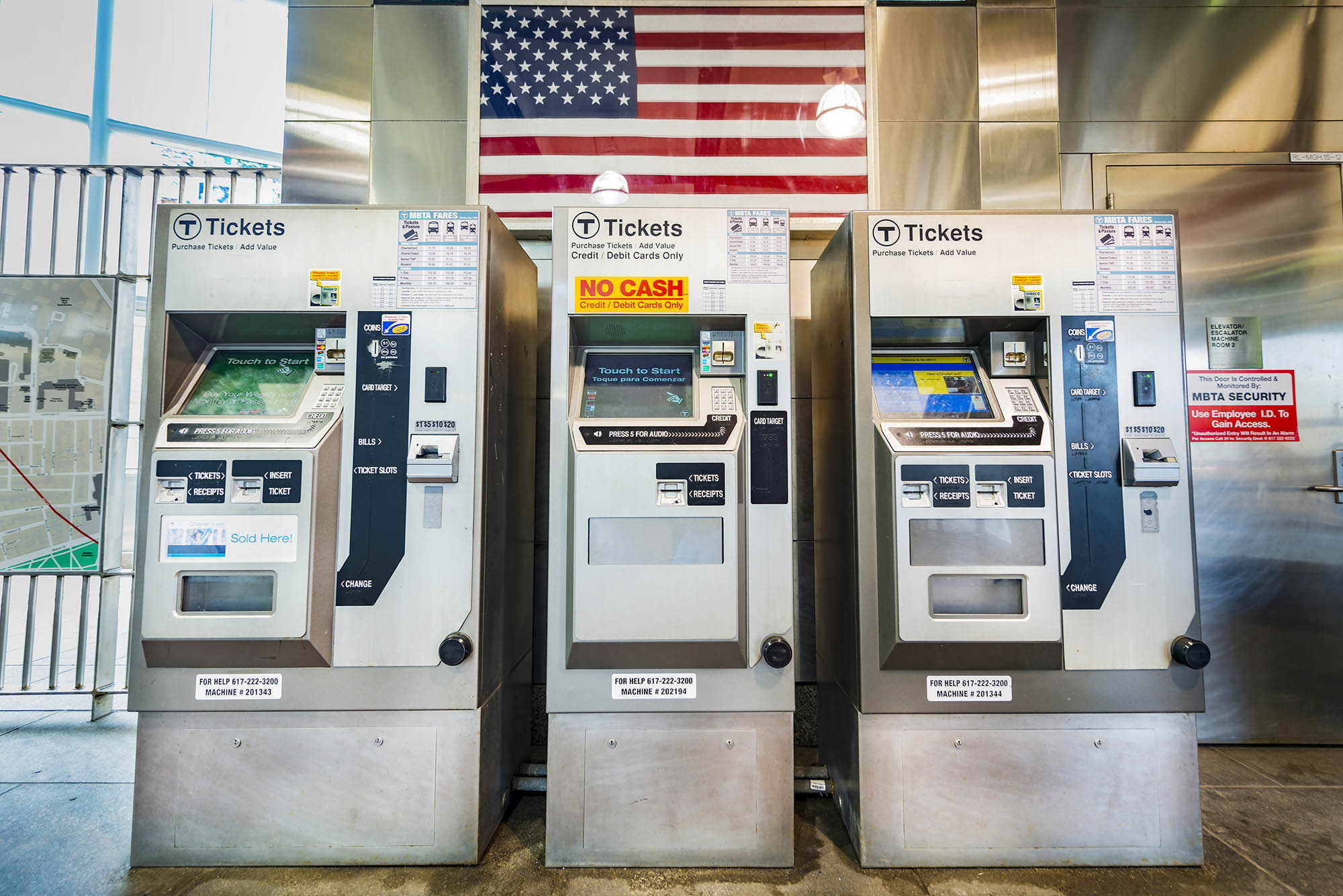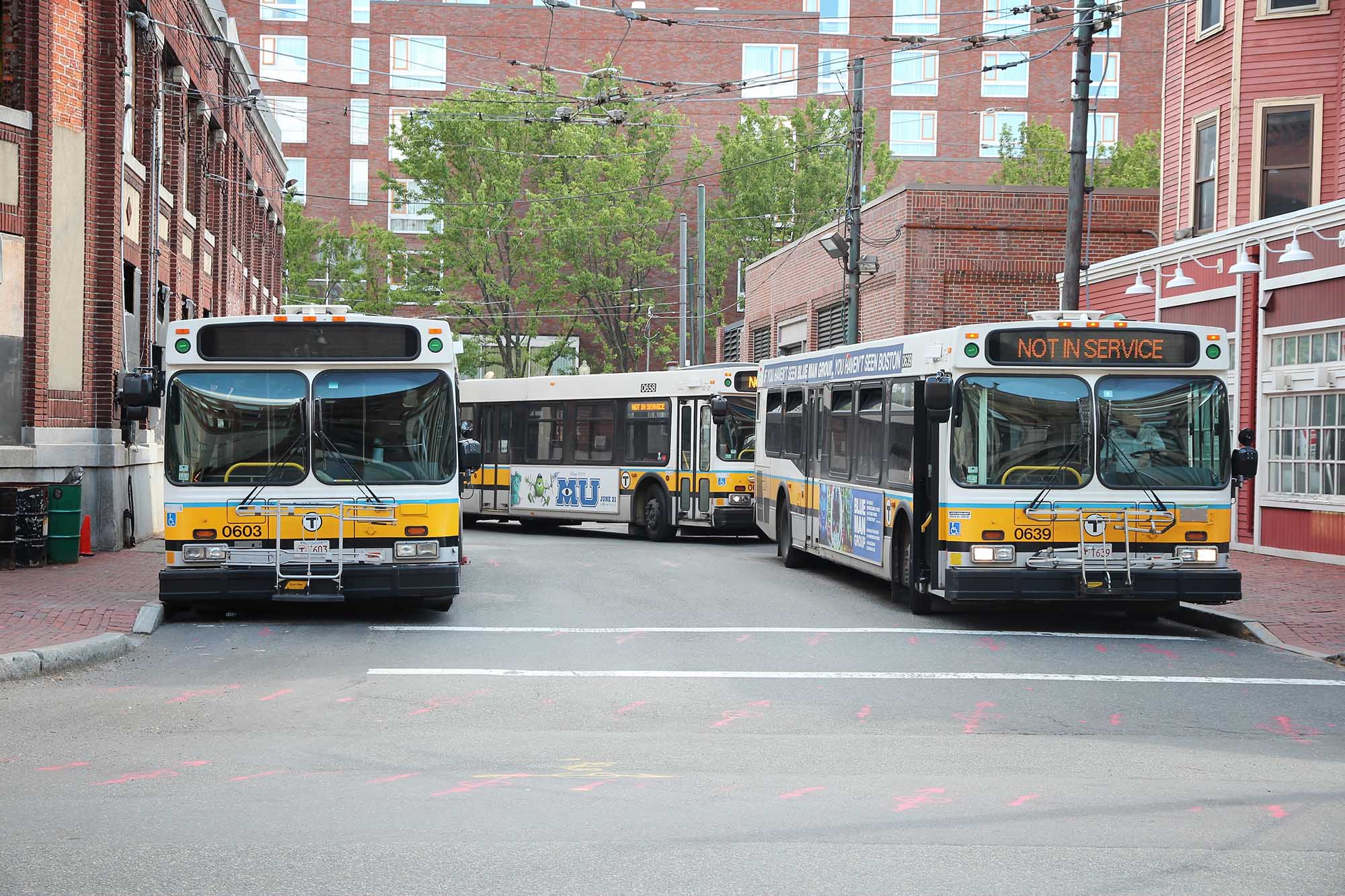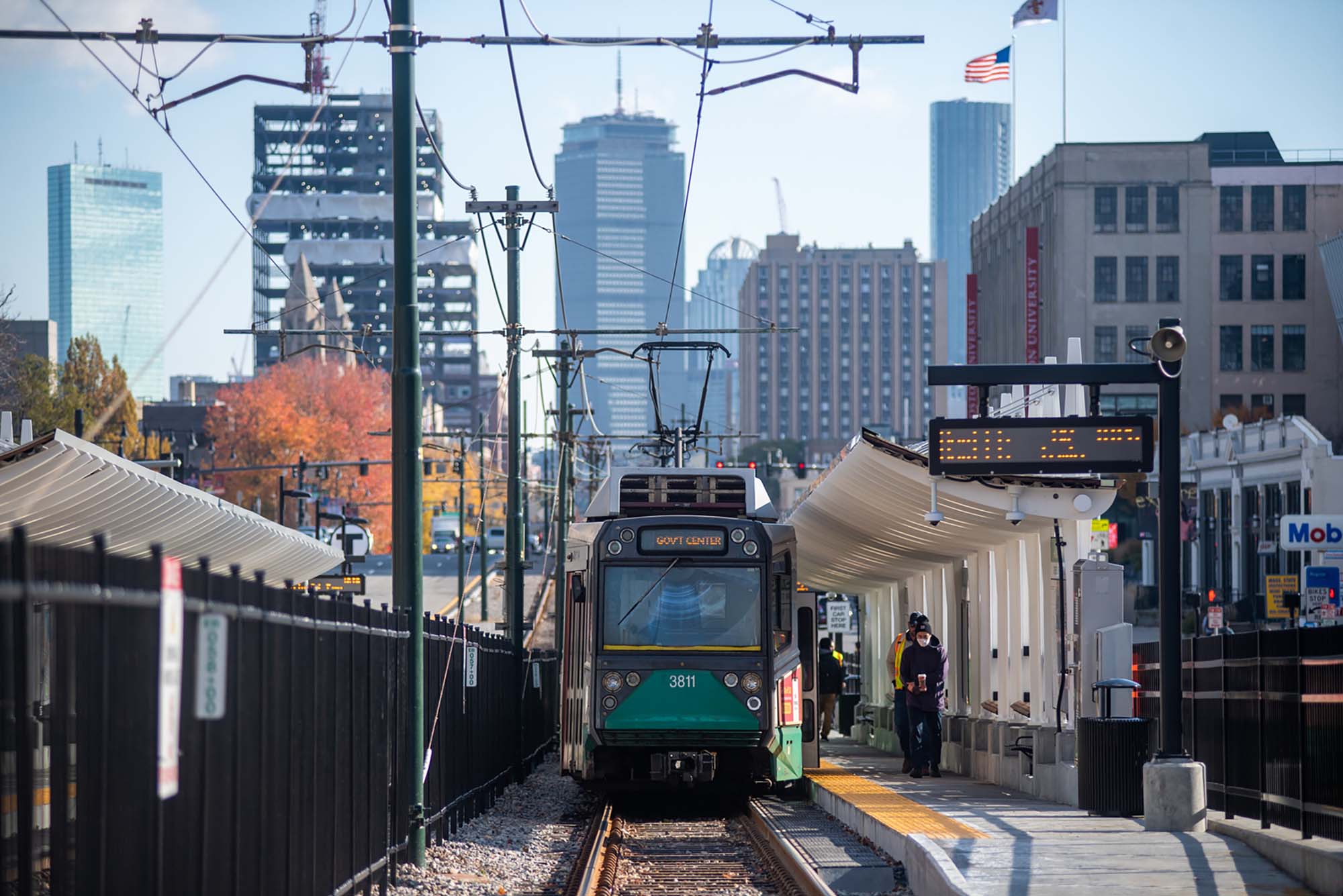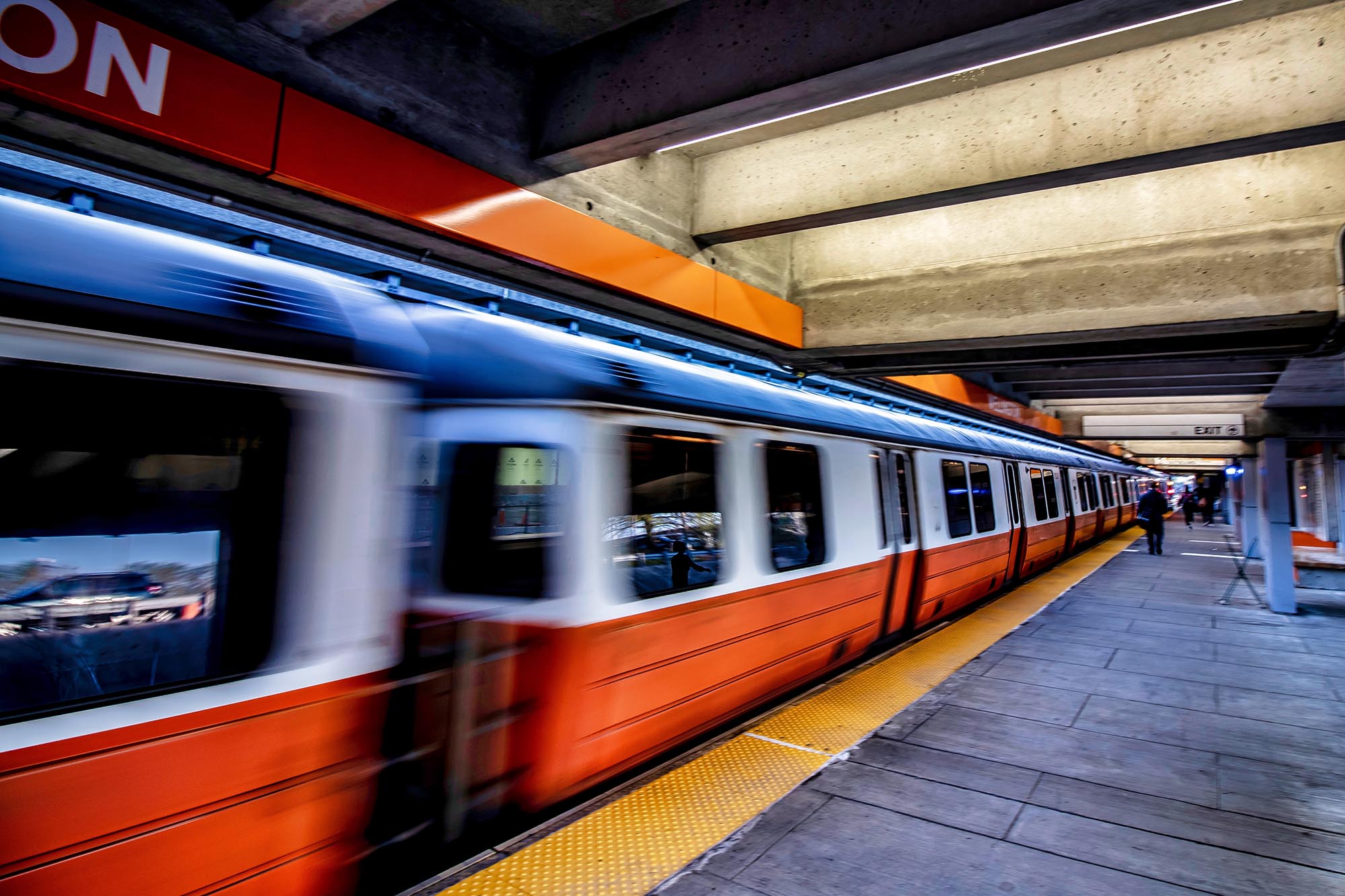Fixing the T: Advice from Terriers for MBTA’s New General Manager
Apple Pay for Charlie Cards, longer trolleys where possible, service until 2 a.m. are among dozens of reader suggestions

Feature image by Justin Yeung via Unsplash. All icons by Designer/iStock
Fixing the T: Advice from Terriers for MBTA’s New General Manager
Apple Pay for Charlie Cards, longer trolleys where possible, service until 2 a.m. are among dozens of reader suggestions
Pretty much everyone agrees the MBTA is broken. The troubled Massachusetts Bay Transportation Authority, which oversees subway, bus, commuter rail, and ferry service in 176 communities across the state, has battled service cuts, deadly accidents, safety incidents, staffing shortages, and ongoing speed restrictions on the T that continue to make daily commuting a headache for hundreds of thousands of commuters. The latest snafu occurred this week when a Green Line B trolley derailed at Packard’s Corner Monday afternoon, creating a traffic logjam on Comm Ave for hours and requiring west-bound passengers to be bused from West Campus to Washington Street.
Governor Maura Healey appointed Phillip Eng, former president of the Long Island Rail Road, as the MBTA’s new general manager this spring. With so many members of the BU community reliant on the T, we asked you to share your ideas on how to improve the T and restore confidence in the beleaguered system.
You did not disappoint. Read on to see the suggestions—and let us know any other ideas in the Comment section.

Fares and costs
There needs to be a way to load Charlie Cards online.
–Katie Grischow (CFA’23)
Make Apple Pay and other similar payment methods available for use on the T.
–Nedda Zsembery (CAS’26)
Reduce the fares and make it run on time.
–Aixin Yi (GRS’28,’28)
The monthly link pass is way too expensive. As an international student, it is tough to pay $90 every month for a monthly T pass.
–Nikita Salkar (CAS’25)
Tap to pay! Getting a CharlieCard becomes really hard on campus and Boston is one of the last major cities to not have a phone option for payment.
–Melissa Booker (CGS’21, COM’23)


Schedules, timeliness, and speed
I would increase the frequency of the T to less than five minutes between each train or trolley, especially during rush hours.
–Harsh Kapadia (GRS’25)
Improve the reliability of the T schedule. The train/trolley times fluctuate considerably, especially during rush hour. I would rather have the T (B Branch of the Green Line) move at slower speeds if I could just have a reliable prediction of when they arrive, if I have to deboard because a trolley is changing to express, or waiting in standby. How to “fix” the T?—ensure the timing of the schedule is reliable.
–Derek Hevel, postdoc, Health Policy and Health Services Research, Goldman School of Dental Medicine
Give the Green Line priority in traffic lights. It is standard in other places in the world that private cars wait for the public transportation and not the other way around. The MTBA should push for this regulation and “traffic light technology” to make the commute faster.
–Danile Aloni, postdoc associate, College of Arts & Sciences physics department
Faster service. Card payment options at each stop or on the bus/T. Later service.
–Amelia Sturbois (CDS’24)
As someone who commutes an hour from Medford on the Green Line, it would be very helpful if the speeds could be increased. I just got back from Montreal, where five stops take less than 10 minutes. My commute was only minimally affected by the recent slowdowns to the T, so I would like to see faster than “back to normal” speeds in a safe manner. The Green Line extension (GLX) is brand-new and below street level, so there seems to be no reason to only go 5 to 10 mph unless you’re approaching a station.
–Dakota Perez, student diversity, equity, and inclusion engagement coordinator, CAS Diversity & Inclusion

Buses
The 57 bus does not adhere to its schedule at all. Sometimes three buses will arrive in a row, always resulting in the third being nearly empty. To start, I would like to see more buses to accommodate the busier hours in case one is stuck in the incoming traffic.
–Sean Mao, department administrator, Emerging Media Studies, College of Communication
The buses should come at more regular intervals. There have been instances where there have been four buses (one, three, four, and six minutes apart) in a row, and then the next bus doesn’t come for another 30 minutes. I have also been on a bus where the bus driver was yelling at someone on the bus and purposefully left someone out in the freezing cold without another bus for 30 minutes.
–Anonymous
I would recommend extra trains and buses during peak hours, if possible. And something must be done about the 66 bus—it’s so frequently late and stuffed to the gills. Complete nightmare.
–Etienne Wasson, senior administrative coordinator, Center for Teaching & Learning


The Green Line
Make the Green Line trolleys one car longer, especially during rush hour, or redesign the cars so that they use space more efficiently and can hold more passengers. Additionally, it would make boarding at above-ground Green Line stops much more efficient if there were fare gates at the station platforms themselves or payment machines at every door. Additionally, the city should rent space for small stores to operate in underground stations so that the MBTA can gain revenue from the rent and taxes and the stores can reach a large customer base. There should also be an active public awareness campaign to encourage riders to give up their seats to other riders with mobility issues, as people rarely do.
–Myra Khan (LAW’25)

1. Regarding the B and C Green Lines: install signs listing the upcoming trolleys and alerts on all stops.
2. When there’s a big delay, a disabled trolley, or a trolley turning into an express, get alerts out right away via the signs, phone apps, texts, etc.
3. Set a fixed time window during which trolleys could turn into express trolleys.
4. Sometimes there are not many passengers to pick up for a few stops, so some trolleys fly through and are ahead of schedule, which only leaves a longer wait time for the next trolley, making it more crowded and more likely it will run behind schedule. Every trolley should more or less stick to the schedule when possible.
5. Better customer service. Drivers should be nicer. If you see someone running to the platform, especially during rush hour, don’t just ignore them and shut the door. Waiting for 15 seconds for them to get on would not delay your trolley that much.
–Qi Li, finance and administration manager, Center for English Language & Orientation Programs
1. If we can shut down the Orange Line for a month, we can shut down parts of the Green Line too, instead of half closure, half operation of the line.
2. Use communications-based train control (CBTC).
3. Learn from the Karlsruhe Stadtbahn system (the tram/train system in Karlsruhe, Germany), which is almost the same as the Green Line.
–Ryan Hong (CGS’21, Questrom’23)

When B Line trolleys going from BC to Boston get full, they sometimes bypass all the Boston University stations. Or if there is some kind of delay, and the BU stations are skipped so the T can “catch up.” This is incredibly frustrating for those along the one-mile stretch of the Green Line that goes through BU. If the T can see that a trolley is starting to fill up, they should skip ahead to the BU stops, instead of slowly going from stop to stop, then skipping the BU stops altogether. Once the trolleys reach the underground portion at Kenmore, people start to leave the trolleys, and riders at those underground stations have the option of boarding B, C, and D trolleys to continue on to downtown Boston.
–Larry Ouellette, senior operations analyst, automation administration, IS&T
Eliminate some of the Green Line stops that are absurdly close together (B Line Allston St. and Griggs St., BU Central and BU East, and Bradford) because it quite literally is faster to walk from those stops than to ride them, and it slows down the commute for riders who need to get to further destinations. This could also solve the problem of slow speeds, so trolleys could get to faster speeds as they aren’t traveling such small distances. I would also follow a model like New York’s subway system, where you can tap your credit card on the scanner as well as a Charlie Card. Riders who don’t have a card or haven’t added enough funds and aren’t at a station with a kiosk (which is a lot) have a more efficient and effective option rather than finding coins and cash in their bag, which also slows down the boarding process. Make these changes because it is better for riders and the MBTA staff!!!
–Elizabeth Greene, college advisor, College Advising Corps
There is one small change that would make the MBTA work much better for me. I commute into BU by commuter rail to North Station and then take the Green Line. The B Line stops at Government Center, which means that every day, I need to change from one Green Line trolley (either E or D because they are the only trolleys that reach North Station) to the B Line on the way into work and in reverse order on the way home. Allowing the B Line to turn around at North Station would make my commute about 10 minutes shorter each way, because I would not be waiting for a trolley at Government Center.
–Elizabeth Beraha, programmer analyst, Analytical Services & Institutional Research

Better integration of existing systems and improving overall service and infrastructure
As a commuter student, I wish I could take the T instead of driving in. Unfortunately, the closest D Line stop is about an hour walk from my house, and the bus that would take me there is often 20 minutes late, runs once an hour at best Monday through Friday, and stops service after 7 pm. I would love a more integrated bus-subway network!
–Brianna Spiegel (Sargent’24)
I would focus on coordinating services. Way too much time is spent waiting for the next bus or train.
–Tara McHugh, research fellow, health sciences department, Sargent College of Health & Rehabilitation Sciences
I would fix the MBTA by addressing three issues: signals, the amount/distance between stops, and those pesky speed restrictions. Coming from New York City, another imperfect transit system, there are important commonalities and lessons to learn from it. For example, both systems have antiquated signals, leading to systems rife with delays and less frequent trains. To fix that requires using modern signaling for the portions of track with signals and priority traffic signals for light rail/buses. Using the 57 bus and the Green Line B branch as examples, trolley/bus stops are generally very close together. The recent consolidation of four T stops down to two in West Campus is a start, but we need to do more. Less stops and a little bit more of a walk mean significantly faster rides for all. Last, speed restrictions have spread like the plague on the MBTA, slowing down rides to a crawl. In NYC, the MTA’s S.P.E.E.D. unit helped remove old speed restrictions: the MBTA should consider the same.
–Jacob Aznavoorian (CAS’25)
1) Add connections to the ends of the spokes. For example, it should be easy to get from Waltham to Norwood.
2) Continue service until 2 am. I have had to leave events earlier than I would have liked in order to make connections between buses and subways to get home before some link shuts down for the evening.
3) The timing of the buses is horrible—not sure why, but it seems that they never run on schedule, though sometimes they are so far off schedule, they seem to be on schedule (i.e., the bus is running so late, it is effectively arriving when the next bus should be).
–Robert Baron, senior software engineer, Rafik B. Hariri Institute for Computing and Computational Science & Engineering
Bring back the Orange Line through Washington Street in the South End. It will help increase access to medical care at Boston Medical Center, a safety net hospital, and dental care at our dental school’s clinic. Currently patients have to take the bus to the Boston University Medical Campus, which many times is not the most direct route and may impinge on their ability to see a doctor or dentist for care. It would be wonderful if they brought that back as a second branch of the Orange Line. It could branch off at Tufts Medical Center and end at Nubian Station, which is a large hub for buses. This would connect many people taking the bus to Nubian with the T.
A more general improvement would be to have a system where you can tap to pay with NFC so that people could pay with their credit cards or phones when entering the bus or T.
Another improvement would be to connect the Blue Line with the Red Line by extending the Blue Line from Bowdoin to MGH.
–Max Prince (SDM’25)

1) Trolleys should take priority over cars. Sensors should cue red lights to turn green for approaching trolleys within a few seconds and red for nearby cars.
2) Stop using MBTA fare money for anything other than the MBTA. Fare revenue should never go towards private transit.
3) Stop deferring maintenance.
4) Eliminate some stops on Green Line B outbound trolleys—there’s no need for Chestnut Hill and Chiswick stops.
5) Many of the Green Line B stops are not safe; redo them like the new Amory/Babcock stops or at least expand platforms and add fencing.
6) Add digital signage at every stop to show when the next trolleys will arrive.
7) On said signage, alert riders if an upcoming trolley is going express and which stop it is going express to.
8) Do not have trolleys go express unless the next trolley is less than two stops away.
9) Line up trolley stops with traffic lights to avoid unnecessary stopping.
10) Stop being proud of having the nation’s oldest subway system if it’s not kept up to date—“younger” subway systems than ours are better for a reason.
–Elyse Wyatt (LAW’24)
I’ve commuted on the MBTA daily for almost a decade now. One of the key problems with the trains is the signaling and track infrastructure. They need to be updated so that the trains can run at full speed. We should be targeting speeds of 60-65 mph and the infrastructure needs to be able to support it. Another issue is the lack of consistency with when trains should arrive. It shouldn’t be acceptable to have 20 or so minutes between one train and the next. In areas like the southern part of the Red Line, it makes sense to have a bit longer between trains, as Ashmont and Braintree lines converge at JFK, but even then, passengers should be waiting less than 10 minutes per train.
The unreliability of the MBTA is a real detriment to the city as a whole and negatively impacts the quality of life for commuters. It also results in more wear and tear on our roads and causes more vehicle congestion on the highways and within the city due to people requiring reliable transportation.
–Christine Harvey (GRS’17)
1) Work to remove slow zones so that commuters can trust the T again to be reliable and timely.
2) Electrify commuter rail and transit-oriented development to ease the housing crisis in Boston and other parts of Massachusetts.
3) Build a ring/circle line that connects Cambridge, Boston Landing, Kenmore, Ruggles, Nubian, Boston Medical Center, South Station, North Station, and Union Square. This would decrease reliance on the Downtown/Park Street station for line changes and provide better service to underserved stations (Boston Landing, Nubian, BMC).
–Iman Zarrinkoub (SDM’25)

Communications
It gets annoying to ride the T one stop just to be told it’s going express (usually to Harvard). To fix this, I would announce it earlier. For example, I would say “After BU East, this trolley will be running express.” I would also put the word “Express to [destination]” on a screen on the outside of the trolley so people know to just wait for the next one.
–Alicia Hamm (COM’26)
Inform passengers in advance about any expected delays. Offer an option to text MBTA users. Announce train delays via speakers located in the train and electronic billboards. Oftentimes, the train will close the door right in the passenger’s face; more time should be allowed for entering the train safely.
–Danuta Charland (MET’01,’03), assistant to the director, Sargent Health Science Temporary Employees

Start by surveying commuters! Create short-term internship positions to sort through responses and organize the data while also giving student interns experience handling large amounts of data. Another priority should be track and signal fixes, followed by hiring more operators and running more trains. Repairs could be completed either at night or over weekends to minimize the impact on commuters.
–MJ Taylor (CAS’22, Pardee’26), education program administrator, BU Nanotechnology Innovation Center
Have a better system when it comes to notifying passengers that out of nowhere, the train is suddenly going express to Harvard. This is a huge inconvenience. The driver always says that there’s another train behind the current one we get kicked off of, but that is never the case. It messes up people’s schedules and people’s trust in the MBTA. Also, somehow add more seats or put out more four-car vehicles during all operating hours. To my knowledge the MBTA buses are just fine. But from experience, the T needs the most work.
–Sabrina Heron (CAS’36)

Miscellaneous recommendations
Create a cleaner environment. Maybe adding cleaning staff would help?
–Lisa Sun (CAS’24)
I’d get rid of the creepy robotic voice used on the Green Line and bring back Frank Oglesby. The voice is bad on its own, but it’s especially unsettling when a longtime Black MBTA staffer’s voice was replaced with that!
–Finn Gardiner, digital communications specialist, Wheelock College of Education & Human Development
Increase the pay for the bus drivers and train/trolley conductors so that more people can afford to work for the MBTA and still live in the city or within range of it. A lot of the service cuts seem to be because the agency lacks staffing, so increasing the pay will entice more people to apply and go through the training needed.
–Katie Kelso, Imagineering Lab manager, College of Engineering
Recruitment, recruitment, recruitment. I’ve seen a lot of talk about how the T isn’t back to pre-pandemic ridership levels. But if it was, it would be so crowded at the current service level that no one would ever fit on the train/trolley (not to mention that with continuing flexibility with working from home, there are fewer people who need to commute anyway). Before riders will return, they need reliable service at reasonable speeds. That means more people to do inspections, more people to repair tracks, more people to drive, more people in oversight. I know it’s something the T has struggled with for years, but you simply can’t run transit if you don’t have employees, so to me that’s the baseline issue to address.
–Abigail Zielinski, administrative coordinator, curriculum committees, Chobanian & Avedisian School of Medicine
Comments & Discussion
Boston University moderates comments to facilitate an informed, substantive, civil conversation. Abusive, profane, self-promotional, misleading, incoherent or off-topic comments will be rejected. Moderators are staffed during regular business hours (EST) and can only accept comments written in English. Statistics or facts must include a citation or a link to the citation.